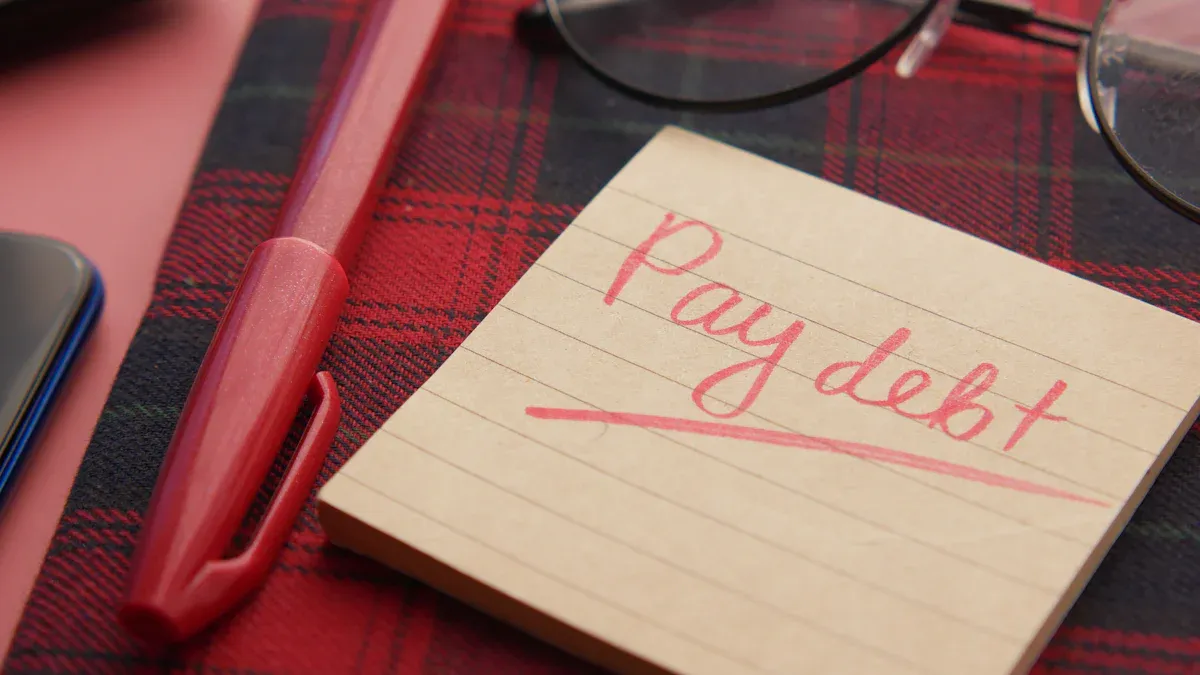Image Source: pexels
Choosing car insurance can seem confusing, but it’s important to refer to a ‘Car Insurance Buying Guide: How to Choose the Best Option.’ This guide helps protect your money if something happens. About one in seven U.S. drivers don’t have insurance, which puts others at risk. Don’t make mistakes like forgetting your driving record or budget. Knowing what you need, as outlined in the buying guide, helps you pick the right plan. This gives you peace of mind.
Key Takeaways
- Learn about the kinds of car insurance coverage. Understand what is required and what is optional to stay safe and protect your money.
- Think about what coverage you need. Look at how you drive, how much your car is worth, and where you live. This helps you pick a plan that works for you and your budget.
- Check prices from different insurance companies. Comparing costs and coverage can help you find better deals and save money on car insurance.
Understanding Car Insurance Basics
Types of Car Insurance Coverage
When picking car insurance, know the types of coverage. In the U.S., car insurance has three main groups:
-
Standard car insurance types: These are often required by law:
- Liability insurance: Pays for injuries or damage you cause to others.
- Personal injury protection (PIP): Covers medical costs and lost wages for you and passengers.
- Medical payments coverage (MedPay): Pays medical bills no matter who caused the accident.
-
Optional car insurance types: These give extra protection, like:
- Collision coverage: Fixes your car after an accident.
- Comprehensive coverage: Covers theft or damage from things like storms.
- Gap insurance: Pays the difference if your car’s value is less than your loan.
- Additional car insurance types: Includes extras like roadside help or rental car coverage.
What Each Coverage Type Protects Against
Each type of coverage helps with specific problems. Liability insurance keeps you from paying out-of-pocket if you cause an accident. PIP and MedPay cover medical bills so you’re not overwhelmed. Optional coverages like collision and comprehensive protect your car from accidents or unexpected events. Without these, you might pay a lot yourself.
Why Understanding Coverage is Important
Not knowing your coverage can cost you money. For example:
- Too little medical payments coverage could leave you with unpaid bills.
- No uninsured motorist coverage means you might not get money if hit by an uninsured driver.
- Low liability coverage could make you personally pay for accident costs.
By learning your options, you can avoid these problems. A good policy gives you peace of mind and financial safety.
Assessing Your Coverage Needs
Things to Think About (Driving, Car, Money)
When choosing car insurance, think about these important points:
- Your driving habits: Drive a lot or in busy areas? You might need more coverage for safety.
- Your vehicle: Expensive or fancy cars often need extra protection like collision or comprehensive coverage.
- Your financial situation: Pick a deductible that fits your budget. A higher deductible means lower monthly costs but more to pay if you file a claim.
- Your location: Live where theft or bad weather happens often? You may need extra coverage.
- State and lender rules: Follow state laws and lender rules, which might require certain coverage types.
By thinking about these, you can pick a plan that works for you and keeps you protected.
State Rules for Minimum Insurance
Every state has its own rules for car insurance. Most states require liability insurance, which pays for damage or injuries you cause. Some states also ask for other types, like uninsured motorist (UM) or personal injury protection (PIP).
| Coverage Type | What It Covers | States That Require It |
|---|---|---|
| Liability insurance | Pays for damage or injuries you cause in an accident. | Almost all states |
| Uninsured/underinsured motorist (UM/UIM) coverage | Helps if someone hits you and they don’t have enough insurance. | About half of states |
| Personal injury protection (PIP) | Covers medical bills for you and passengers, no matter who caused the accident. | Mostly no-fault states |
| Medical payments coverage | Pays for medical costs after a car accident. | Only required in Maine |
Knowing these rules helps you avoid fines and stay legal.
When to Get Extra Coverage
Basic insurance might not cover everything. Think about extra options if:
- Your car is new or expensive to fix or replace.
- You live in a place with lots of theft or bad weather.
- You want extras like roadside help or rental car coverage for peace of mind.
Optional coverages, like comprehensive or gap insurance, can protect you from big money problems when unexpected things happen.
Comparing Insurance Providers
How to Shop Around for Quotes
Getting car insurance quotes helps you find good deals. Start by collecting quotes from at least three companies. Use online tools to compare quickly and easily. These tools let you enter your info once and get many quotes fast. If you prefer, call insurers directly for a personal touch.
Make sure all quotes have the same coverage and limits. This way, you can compare them fairly. Look at deductibles and premiums carefully. A cheaper premium might mean higher deductibles or less coverage.
People switch insurance for many reasons:
- To save money.
- After getting married to combine policies.
- Moving to a new state.
- Adding someone to their policy.
- Being unhappy with their current insurer.
- Changing driving habits.
- Bundling policies together.
- Improving their credit score.
Think about your situation to see if switching helps you.
Evaluating Insurer Reputation and Customer Service
An insurer’s reputation is as important as their price. Read customer reviews to see how happy people are. Check feedback on claims, response time, and service quality. Avoid companies with lots of complaints.
Look at the insurer’s financial strength through agencies like AM Best. A strong company pays claims faster. If you’ve had bad service before, switch to one with better reviews.
Understanding Policy Terms and Conditions
Before choosing a policy, read the terms carefully. Look for things it doesn’t cover, limits, or extra fees. Make sure you know what is included and what isn’t. For example, some policies don’t cover certain disasters or risky drivers.
Ask questions if you’re confused. Understanding now avoids problems later. Good insurers explain terms simply. This helps you pick a policy that fits your needs and avoids surprise costs.
Tip: Always keep a copy of your policy for reference.
Tips to Save Money on Car Insurance
Find Discounts and Bundle Policies
Insurance companies give discounts to help lower your costs. Check these ways to save:
- Multi-policy discounts: Combine car insurance with home or renters insurance.
- Multi-vehicle discounts: Insure more than one car under the same plan.
- Claim-free discounts: No recent claims? You might get cheaper rates.
- Good student discounts: Students with good grades can qualify for savings.
- Telematics discounts: Drive safely with a tracking device to earn discounts.
- Affiliation discounts: Belong to certain groups? You may get special rates.
- Paid-in-full discounts: Pay your premium all at once to save money.
Bundling car insurance with other policies makes billing easier. It also saves money. For example, Progressive offers about 5% off, and Allstate gives up to 25%.
Raise Deductibles to Lower Costs
Your deductible is what you pay before insurance helps. Picking a higher deductible lowers your monthly cost. For example, raising it from $500 to $1,000 can save you hundreds yearly. But make sure you can afford the deductible if there’s an accident. Balance savings with what you can pay.
Skip Unneeded Coverage
Think about what coverage you really need. For older cars with low value, collision or comprehensive coverage may not be worth it. If you already have roadside help through another service, skip it in your policy. Adjusting your plan to fit your needs saves money.
Tip: Check your policy often to update it as your needs change.
Finalizing Your Policy
Reviewing the Policy Details
Before you finish buying car insurance, read the details carefully. Check what the policy covers, the deductibles, and what it doesn’t include. Some policies don’t cover things like stolen items from your car, damage from regular use, or using your car for work. Make sure the policy fits your needs and avoids surprise costs.
Look closely at the small print. Watch for limits on where you can drive, rules about who can drive your car, or restrictions on custom parts. These can change how much protection you get. If anything is confusing, ask questions. Knowing your policy well helps you understand what you’re paying for.
Tip: Keep your policy copy safe for later use.
Asking Questions Before Signing
Good questions can help you avoid problems later. Ask what the policy covers and doesn’t cover. Find out how to file a claim, how long it takes, and what papers you’ll need. Check if you can get discounts, like for safe driving or bundling policies.
Ask about payment choices and if paying all at once saves money. Also, ask about canceling the policy and any fees. Clear answers will make you feel sure about your choice.
Steps to Purchase and Activate Your Policy
Buying and starting car insurance has a few steps:
- Pick how you want to buy (online, agent, or insurer).
- Choose the coverage types and limits that match your needs.
- Decide on a deductible based on your risk level.
- Fill out the application with correct details.
- Compare quotes from different companies.
- See if you qualify for discounts.
- Pick the policy with the best value.
After choosing, pay to start your coverage. Most insurers activate it right after payment. Keep proof of insurance handy for legal or money reasons.
Note: Check your policy again after activation to ensure it’s correct.
Picking the right car insurance takes time, but it’s worth it. Knowing your coverage helps you avoid extra costs and stay safe. Checking your policy often lets you adjust for changes, find discounts, and follow the rules. Comparing quotes and choosing a higher deductible can lower your costs too.
Spend time finding a plan that works for you. A good policy gives you peace of mind and protects your money. Using this guide will help you choose wisely and enjoy lasting benefits.
FAQ
What papers do you need to get car insurance?
You’ll need your driver’s license, car registration, and proof of where you live. Some companies might also ask for your driving record or credit score.
How do you know if an insurer is trustworthy?
Look at customer reviews and ratings online. Check their financial strength with groups like AM Best. Good insurers have strong reviews and pay claims well.
Can you change car insurance companies anytime?
Yes, you can change anytime. But check if your current policy has cancellation fees. Tell your new insurer so you don’t lose coverage.




